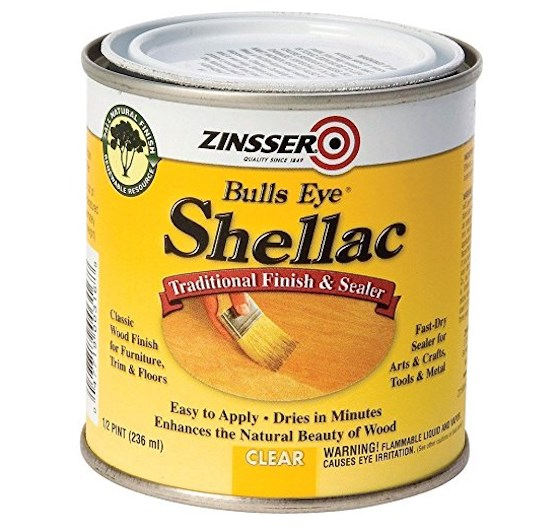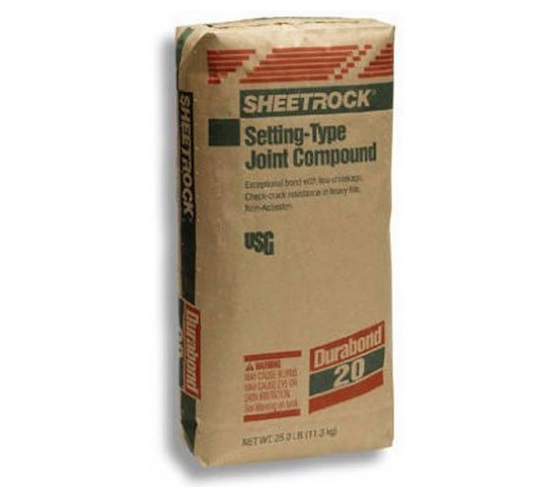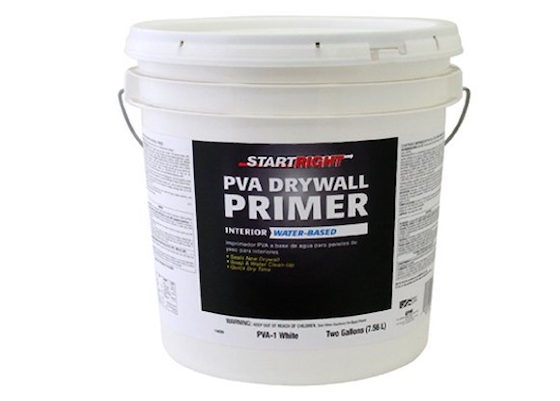Drywall Paper Repair Tips

The brown paper is the inner core of the layered paper that surrounds the gypsum core of common drywall. If you coat this paper now with joint compound you WILL GET BLISTERS. The torn paper area of the drywall has been trimmed and it's ready to be coated with a sealer (see below) and then repaired. © 2017 Tim Carter
Drywall Paper Repair TIPS
- Inner paper core swells when wet
- Cut away rough edges
- Seal inner core paper with shellac
- Drywall Finish VIDEOS Below!
- CLICK HERE to Get Tim's FREE & FUNNY Newsletter!
DEAR TIM: I was removing an ugly ceramic tile backsplash in my kitchen. Some of the drywall paper came off with the old glue. It looks horrible. A home center employee told me I have to put in new drywall. This can't be true. Is there a way to repair this so the wall is once again perfectly smooth? Surely you know secret ninja tricks that will save me! Shelly B., Siesta Key, FL
DEAR SHELLY: I'll never forget the first time that happened to me. I was removing large sheets of thin wood paneling that had been nailed and glued over unpainted drywall. Oh my goodness, what a mess I had. The second time it happened to me, I was stripping off wallpaper in a bathroom. The paper hanger didn't prime the drywall with the proper sealant to prevent the wallpaper glue from bonding to the drywall paper.
Home Center Advice 🙁
First, the advice you received from the home center employee is completely wrong. You don't have to replace the drywall.
I'm going to describe to you how to repair it. It's a shame that so much bad advice is dispensed each day inside those big box stores.
CLICK HERE to get FREE & FAST BIDS from local drywall repair contractors.
High-Tech Paper
The common drywall that's found in many homes is made with high-technology paper. You'd be surprised how thick the actual paper is.
You can see it if you look closely at a cross section of drywall after it's been cut or at the end of a piece before it's installed.
The side of the paper that faces into your room and the other side that touches the wet gypsum at the factory are made to resist the water that's in the finishing compounds and the wet gypsum.
But the center part of the paper will misbehave if water reaches it.
Inner Paper Swells
If you've ever tried to patch drywall where the facing paper is torn off exposing the core of the paper, you'll quickly discover that the water in the patching compound almost always causes bubbles and blisters to form. The more you pop them and recoat them, the faster they return.
Trim Rough Edges
The first step in making a blister-free repair is a razor knife. You use this tool to trim any partially peeled up paper around the edges of the damaged area. You must have crisp cut lines all around the damaged area with no peeling paper.
Seal the Paper
Once you've done this simple step, you should then coat the brown inner-core paper with an oil-based sealer that dries quickly. You can purchase spray cans of these primers, or you can brush on clear or white shellac. Just be sure that whatever sealer you use, it doesn't contain any water. You can even use left-over oil-based paints.

This is a time-tested sealer. Shellac is fantastic. It's great to hide water stains too. CLICK THE IMAGE TO ORDER THIS NOW.
Be sure when you apply this sealer, that you paint or spray over the edges of the damaged area onto the undamaged drywall paper. You want to seal the thin edges of the drywall paper too.
CLICK HERE to get FREE & FAST BIDS from local drywall repair contractors.
Repair Compound
Once the sealer has dried, you can then skim coat the area with regular drywall compound. The area that needs to be coated is probably less than one thirty-second of an inch, so it's not very thick.
To speed up the repair process, you might consider using the setting type joint compounds. These are powdered products that you mix with water.

This is a fast-setting joint compound you mix with water. I've used this brand for decades. It's an EXCELLENT material. CLICK THE IMAGE TO ORDER THIS NOW.
They come in various setting times. The shortest time is 20 minutes. Mix with COLD water if you want to slow down the set-up time a little bit.
WATCH THIS VIDEO about this amazing product:
Mix with hot water if you want to speed it up. NEVER add water (re-temper) this type of material if it starts to get hard in your mud pan or a bucket. It will lose strength if you do this.
This is why I try to only mix small amounts so it won't go to waste.
Drywall Repair Videos
Watch these two videos. The one shows you the consistency of the repair mud. You can mix the dry-setting compounds just like you see in the video making it like warm cake icing.
Paint In One Hour
If you use a fast-setting one, you can apply two coats of the compound in less than 30 minutes.
To get a silky smooth finish, be sure to use the topping compounds that come in the buckets. These products really do finish smoother.
Primer/Sealer Paint
The biggest mistake homeowners make after a repair like this is not applying the right paints after the repaired area is dry and sanded. If you don't paint it properly, even though the area is perfectly smooth, you'll still see the repaired area in certain light.
One ninja trick I've used for years is to use a special sealer primer paint over the freshly sanded area. Remove all dust before painting.

This is an excellent drywall primer. It must say it on the label for it to be the right primer/sealer. CLICK THE IMAGE NOW TO BUY THIS GREAT PRIMER/SEALER.
The primer/sealer does two very important things. The sealer component of the paint actually seals the very porous repair compound preventing the next coat of paint from soaking in.
The primer aspect of the paint contains coarser pigment particles that help homogenize the texture, on a micro level, so the texture of the repaired area and the other drywall surrounding it match. Doing this makes the patched area disappear once the final coat of paint is applied.
CLICK HERE to get FREE & FAST BIDS from local drywall repair contractors.
Column 969
20 Responses to Drywall Paper Repair Tips